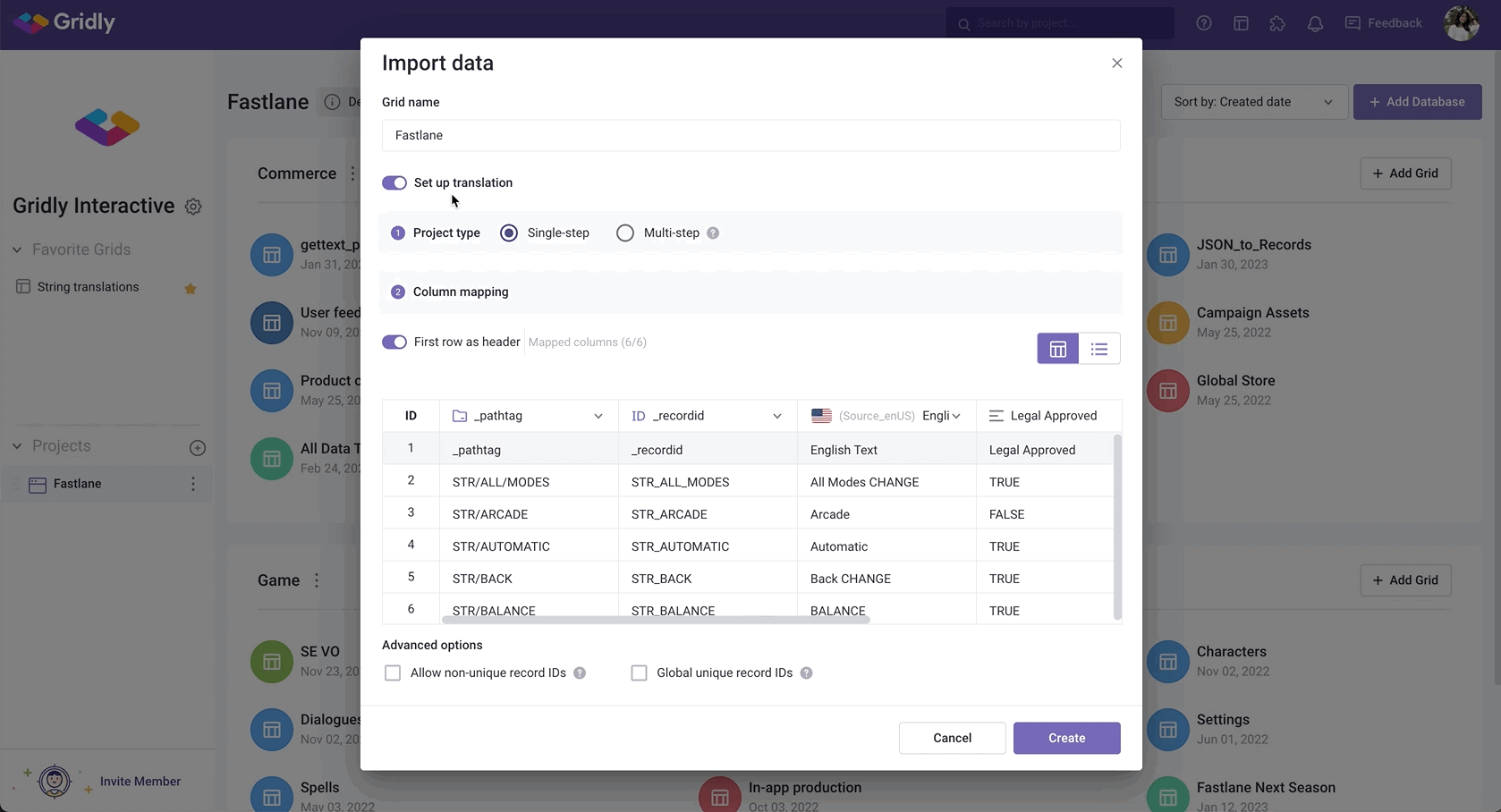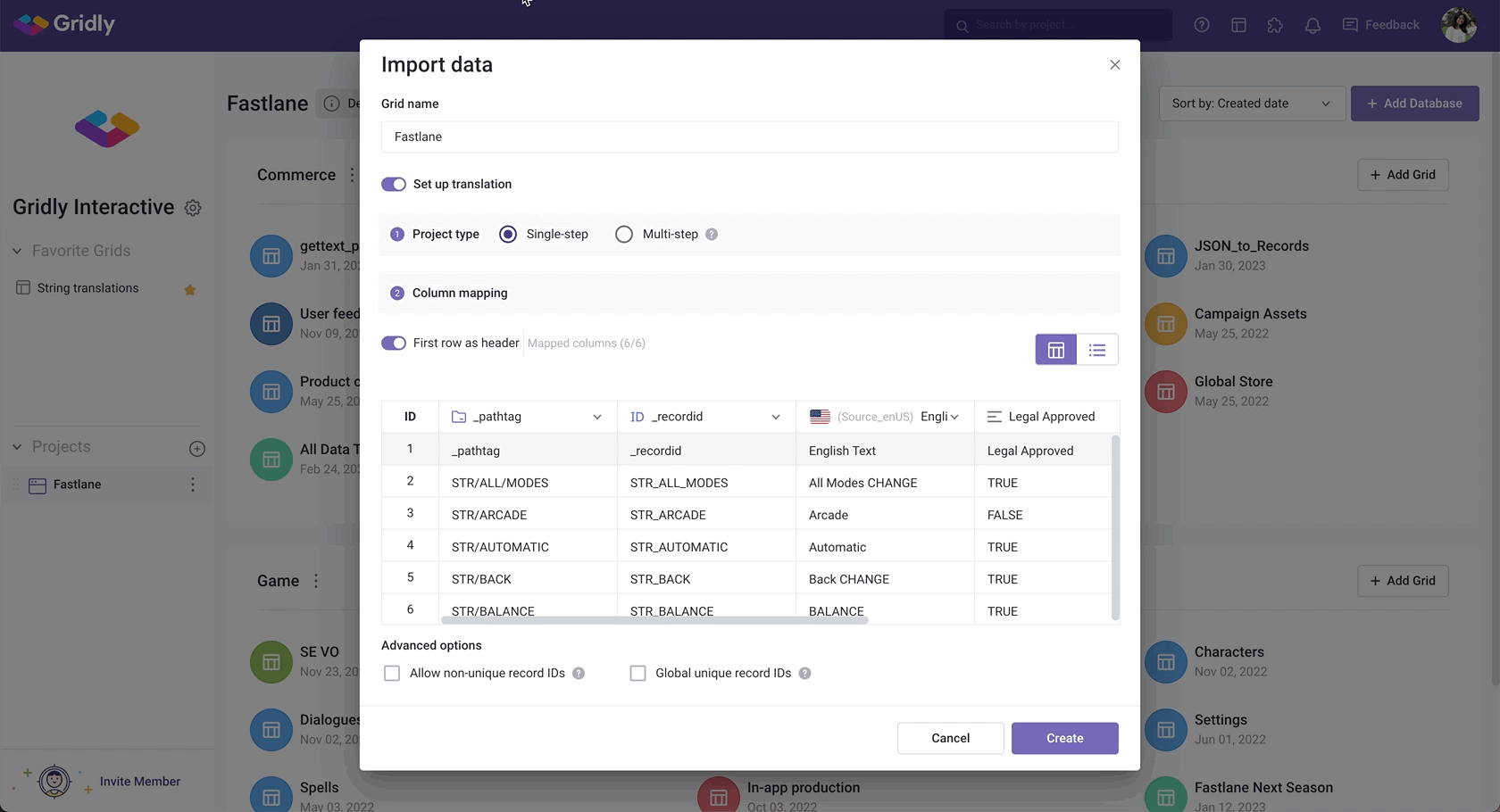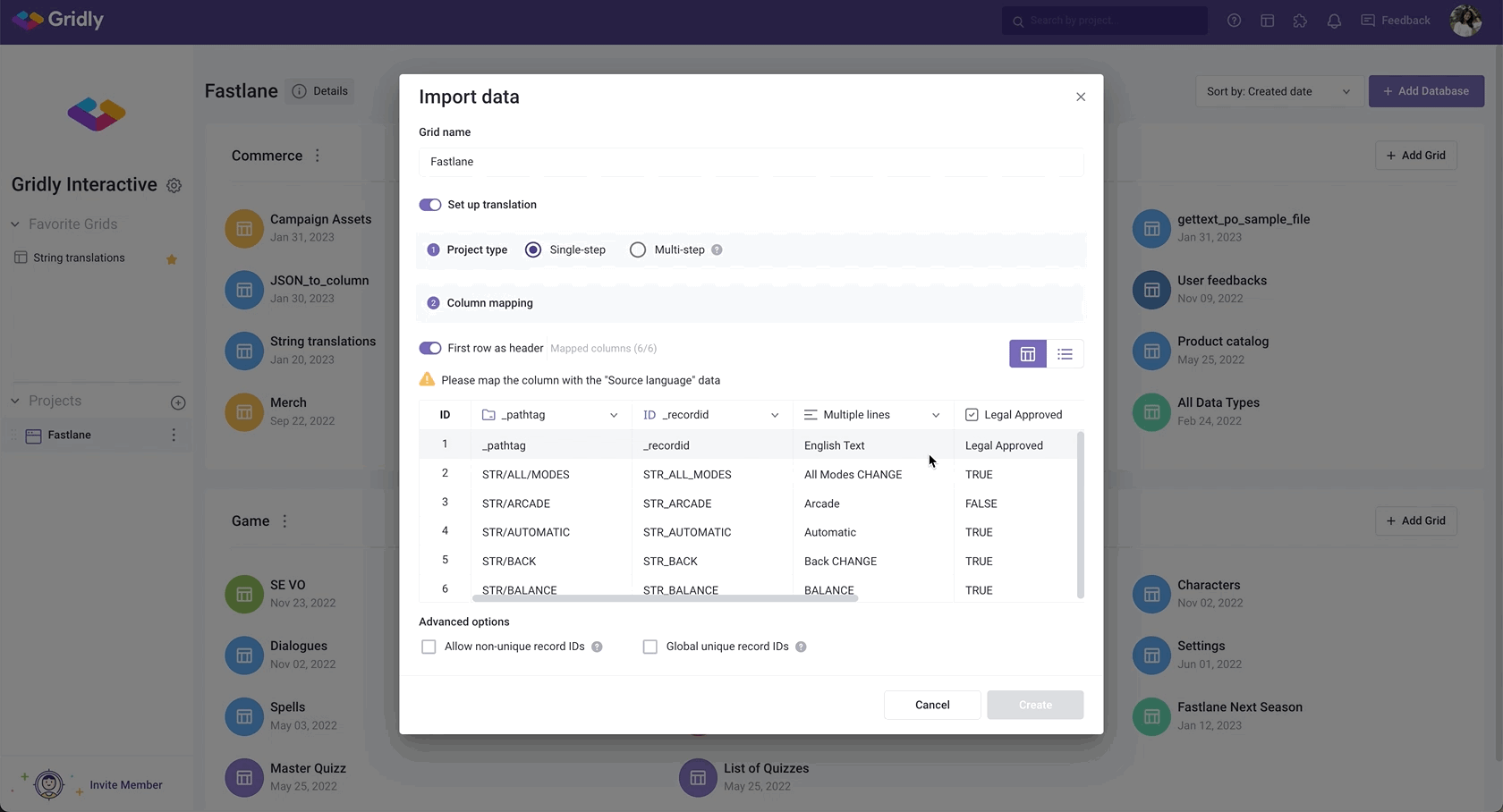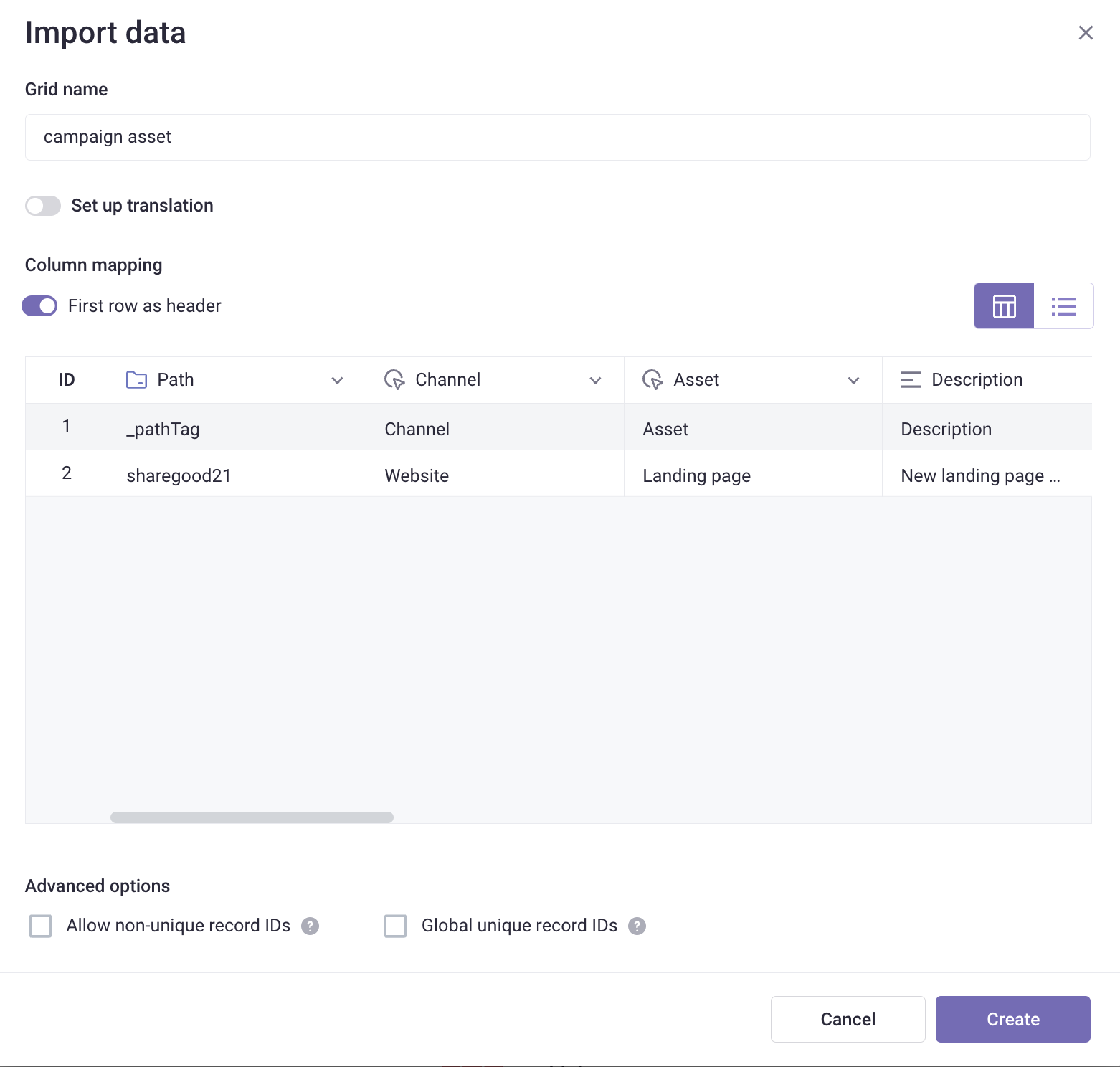This feature is available in both the CMS and TMS modules.
With Gridly, you can easily import multiple file formats, including CSV files. For other import options, please view these articles:
CMS module
Add a CSV file
- On the project page, click + Add Grid.
- Select Import file from the dropdown menu.
- Open the CSV file you want to import.
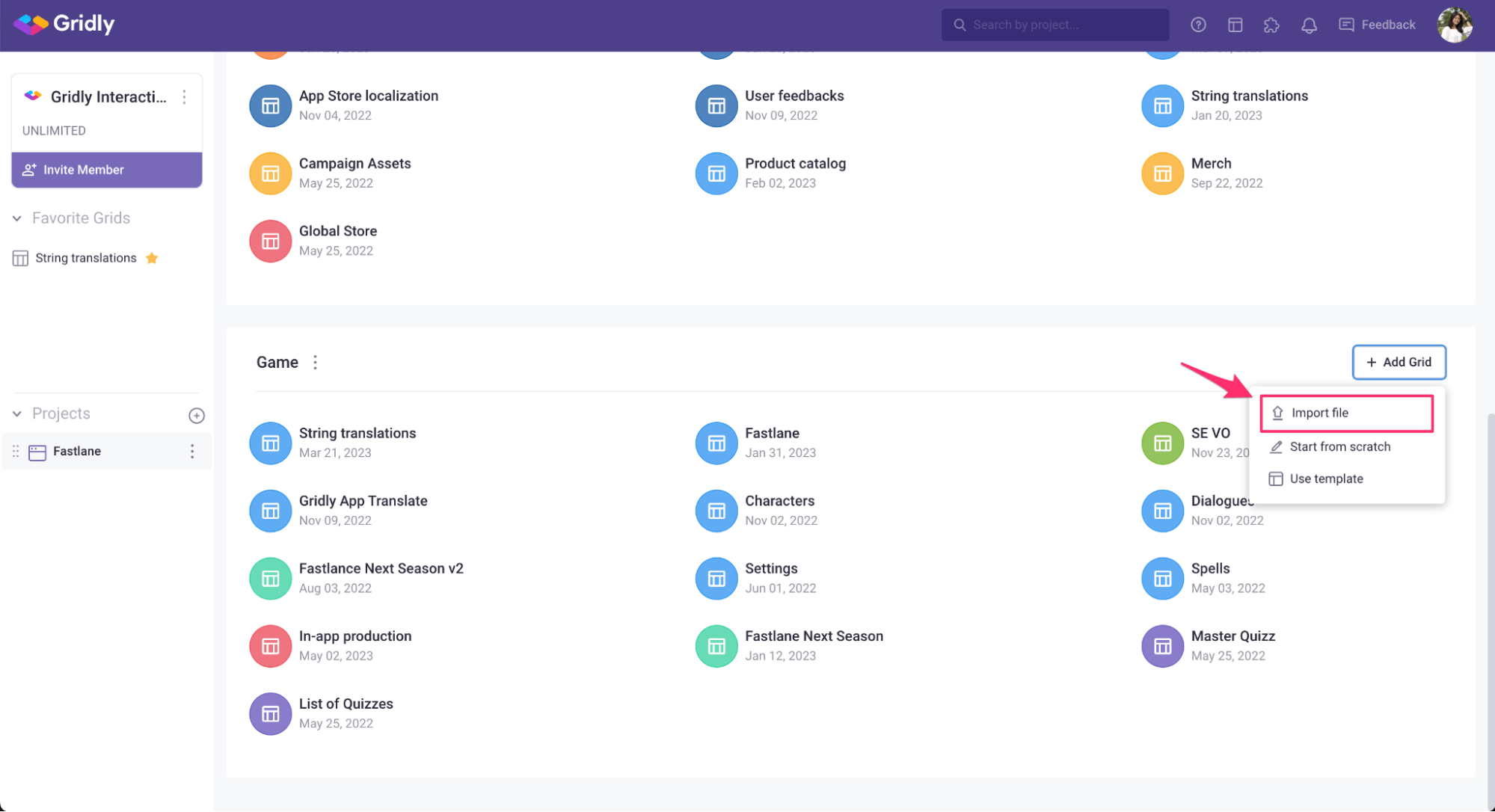
Customize your columns
Select the import mode by toggling Set up translation.
- If you are importing a localization file which contains language columns (English, French, etc). You can continue to set up.
- If you are uploading a non-translate file, which does not contain language columns, like an asset management file, toggle off Set up translation.
Translation Grid: contains language columns
-
Select the project type:
- Single-step: if you’re translating from a single source language to one or multiple target language(s).
- Multi-step: if you’re translating from an initial source language to a pivot language and then to target languages. For example: Chinese -> English -> Global languages.
-
Map the columns with the appropriate column types. Gridly will automatically map the columns for you depending on the column name. You can further customize your Grid with these options:
- Use first row as header.
- Manually adjust column types.
- Allow non-unique record IDs, global unique record IDs.
- Click Create and the Grid is now in your selected database.
Note
You need to have at least one source language column in your Translation Grid in order to be able to create it, so make sure you set a column as the source language column. For example:
Non-translation Grid: does not contain language columns
Similarly, Gridly will automatically map the columns for you depending on the column name. If you need to customize the data, you’ll be able to:
- Use first row as header.
- Manually adjust column types.
- Allow non-unique record IDs, global unique record IDs.
Then, click Create and the Grid is now in your selected database.
Tips
For a simplified view, you can select the list view icon on the right-hand side.
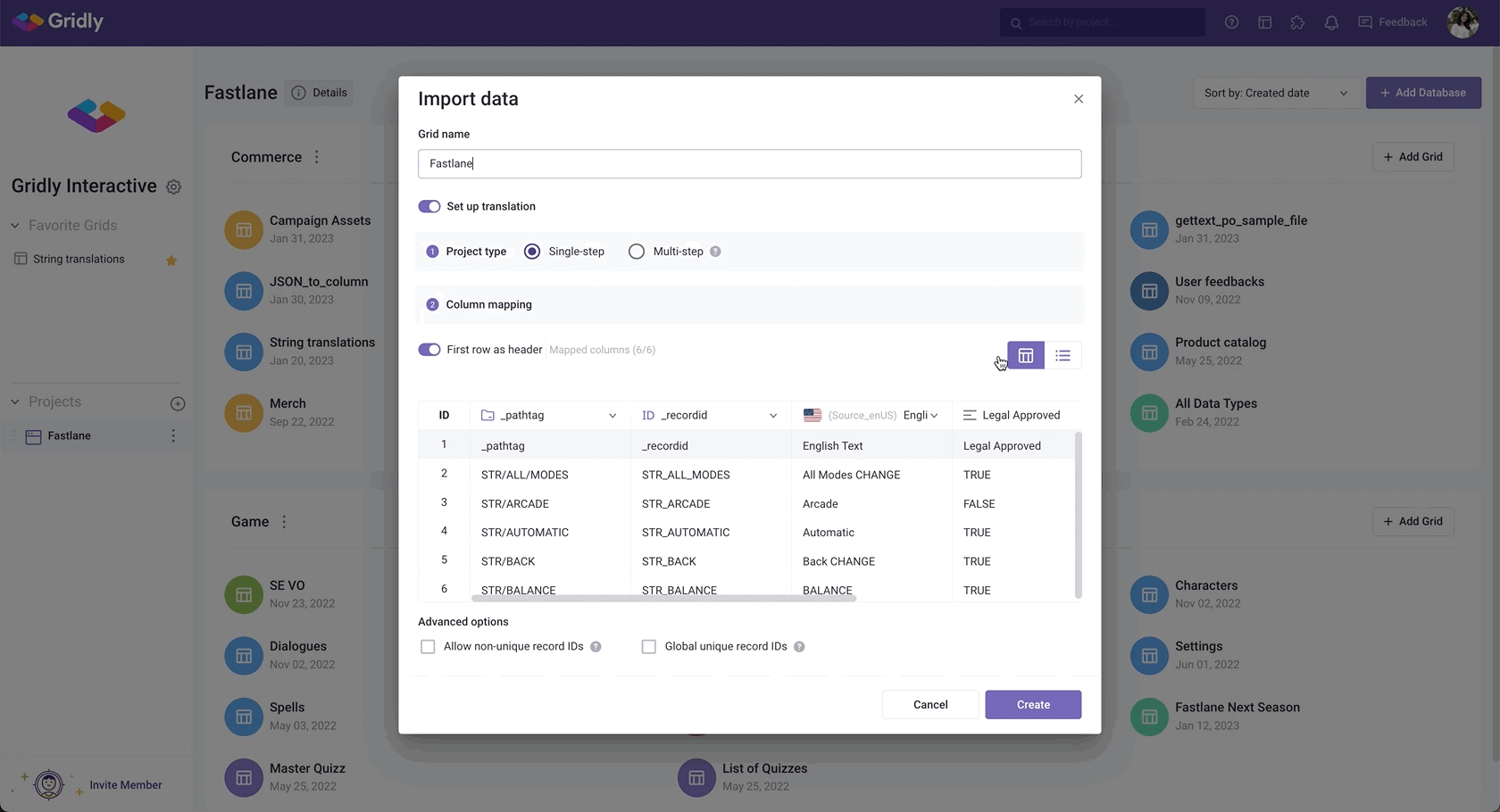
TMS module
You can create a Job in the TMS module by importing a CSV file. If you are unfamiliar with the TMS module, refer to this getting started with TMS guide.
- Open the TMS module and go to the Category in which you want to create the Job.
- Inside a Category, click Upload file.

- Select the CSV file you want to upload.
- Fill in Job details:
- Job name: Set as file name by default
- Description
- Assignee
- Due date
- Priority
- Target languages: Category's target languages will be selected by default
- CSV - File import settings:
- Skip headers: Toggle this on to ignore the header row in your CSV file
- Delimiter
- Encoding
- Source language columns: Select an option
- Import all columns
- Import specific columns
- Record data columns: Select this to create Record data columns to offer translation contexts.
- Rows to import: Select an option
- Import all row
- Import specific rows only: Row index starts at 0. You can enter a specific row (e.g. 3) or a range of rows (e.g. 4-8).

- Job workflow: Select a Job workflow from the list. This workflow will determine the steps and status changes for the Tasks under this Job.
- Click Next to preview the Grid before importing.
- Click Complete.
- Wait for the process to finish. Click Manage job to see the newly created Job.

